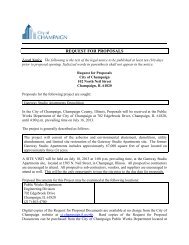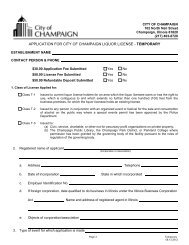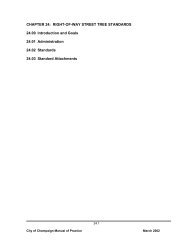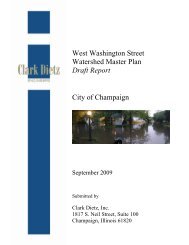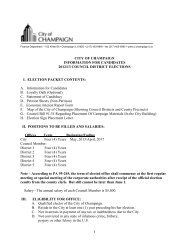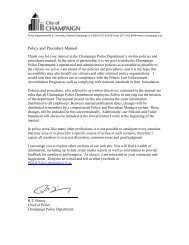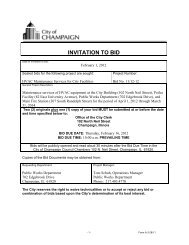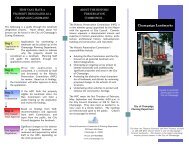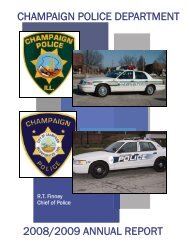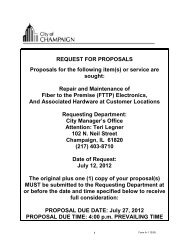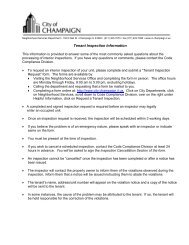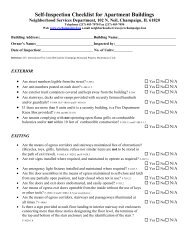2010-2014 Consolidated Plan - City of Champaign
2010-2014 Consolidated Plan - City of Champaign
2010-2014 Consolidated Plan - City of Champaign
Create successful ePaper yourself
Turn your PDF publications into a flip-book with our unique Google optimized e-Paper software.
According to the <strong>Champaign</strong>-Urbana Tenant Union, common problems that occur because <strong>of</strong> inadequateaccess to legal representation include:• Loss <strong>of</strong> housing as a result <strong>of</strong> unfair eviction practices• Loss <strong>of</strong> rent, utility payments, or security deposits due to the tenant upon lease expiration• Inability to satisfactorily remedy unsafe building conditionsThe <strong>Champaign</strong>-Urbana Tenant Union estimates up to 600 clients each year need legal counseling orrepresentation, which they cannot afford. The quality <strong>of</strong> housing, as well as the quality <strong>of</strong> life for manypeople, would be dramatically improved if legal counseling and representation for tenant-landlordproblems were provided at little or no cost to the very low-income households for whom no legal help isnow available.SECTION 3D: HOMELESS NEEDSINTRODUCTIONThe HUD-prescribed matrix below provides a summary <strong>of</strong> the nature and extent <strong>of</strong> homelessness in<strong>Champaign</strong> County.Estimated Unmet Need –Relative PriorityCalculated From Combined SurveysIndividualsEmergency Shelter 4 MBeds Transitional Housing 25 HPermanent Housing 85 HTOTAL 114Persons in Families with ChildrenEmergency Shelter 6 HBeds Transitional Housing 40 HPermanent Housing 60 HTOTAL 106Source: Survey <strong>of</strong> Homeless Persons in <strong>Champaign</strong>-Urbana, conducted August, 2009.In the most recent survey <strong>of</strong> homeless persons in <strong>Champaign</strong> County (August 2009), 13 persons reportedchronic homelessness, i.e. have been homeless for more than one year or have suffered homelessness 4or more times in the last 3 years and having a disabling condition. Transitional homelessness occurswhen a housing crisis (i.e., loss <strong>of</strong> job, domestic violence) temporarily renders an individual or familyhomeless. When homeless services are provided, these persons usually are able to locate and obtainanother stable housing situation. In <strong>Champaign</strong> County, 14 percent <strong>of</strong> homeless persons would fall intothis category based on the most recent survey.Episodic homelessness refers to circumstances in which persons have recurrent problems with housing.Often these persons have substance addictions, seasonal/minimum wage income or sporadic domesticsituations that affect stable housing. In <strong>Champaign</strong> County, approximately 20 percent <strong>of</strong> homelesspersons would be episodic users <strong>of</strong> homeless services.Approximately 61 percent <strong>of</strong> the homeless respondents recently surveyed had been homeless for morethan one year or for four or more times during the past three years. However, chronic homelessness isdefined by HUD as a situation in which an unaccompanied person has been without a permanentresidence for a period <strong>of</strong> more than one year or for more than 4 times in the last 3 years and suffersNeeds Assessment: Housing and Homelessness 33



